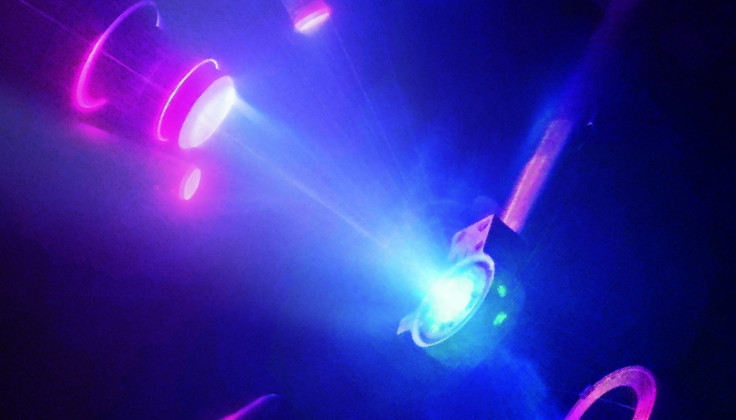Superionic ice: Scientists create new form of matter - water that's solid and liquid at the same time
Superionic ice does not exist naturally anywhere on Earth.

Scientists at the Lawrence Livermore National Laboratory in California have created a new form of matter that has never been observed before by humans: water that is both solid and liquid at the same time.
This strange form of water – known as superionic ice – does not exist naturally anywhere on Earth to our knowledge although it may be plentiful in other regions of the universe especially on planets such as Uranus and Neptune.
Superionic ice was predicted to exist about 30 years ago, given sufficiently high pressures and temperatures but until now, scientists have not been able to provide experimental evidence of it.
Water consists of two hydrogen atoms connected to one oxygen atom, which are structured in a 'V' shape when in ice form. But when squeezed under pressure, these atoms can form other structures, resulting in more than a dozen different types of ice.
In superionic ice, the oxygen atoms become arranged in a rigid lattice while the nuclei of the hydrogen atoms move freely, creating properties of both a solid and a liquid at the same time. In addition, the ice can conduct electricity like a metal.
To create the superionic ice, researchers used a device known as a diamond anvil cell (DAC) which enables scientists to compress tiny bits of material under extreme pressures, akin to those that exist deep inside planets. The cell is composed of two pieces of diamond with a sample placed in between.
The team compressed the water to 25,000 atmospheres of pressure (in other words, 25,000 times the pressure of the Earth's atmosphere). This created a type of ice known ice VII, which is solid at room temperature.
In a separate lab, they then blasted the DACs containing the compressed ice with extremely powerful laser pulses lasting 10 to 20 billionths of a second. This heated it thousands of degrees and simultaneously created shockwaves which compressed the ice further.
This process breaks the chemical bonds between the hydrogen and oxygen atoms, allowing the hydrogen atoms to flow like a liquid while the extreme pressure keeps the larger and heavier oxygen atoms fixed in place.
The research is described in a paper published in the journal Nature Physics.
Water is one of the most ubiquitous substances on our planet but we are often unaware of how unusual it actually is.
For example, unlike almost any other known substance, water's solid form floats on its liquid form; water ice expands rather than contracts; it has the highest surface tension of all known liquids; and when it is super-cooled it may exist in two different states simultaneously.
Liquid water can exist far below the normal freezing point. Two groups of scientists recently measured liquid water at temperatures of around -45C.





















